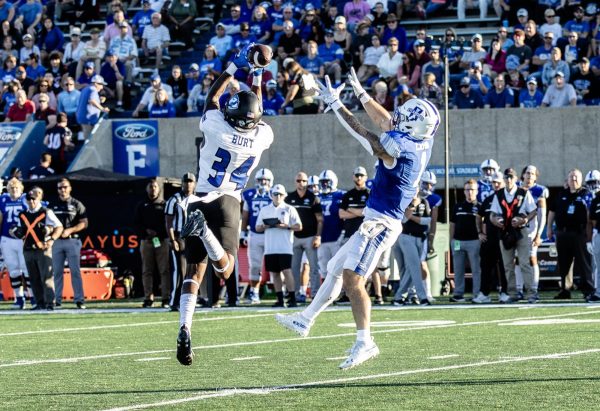Men’s Tennis: A first-hand look at New Orleans
The Eastern men’s tennis team beat Xavier (La.) 7-2 on March 13. However, the Panthers brought home with them more than just another match in the win column. They gained perspective.
During the team’s brief trip to the Gulf Coast, the players and head coach John Blackburn saw the extent of the damage remaining since Hurricane Katrina struck the area in August 2005.
While the team was in New Orleans, Blackburn said he and his players discussed taking a tour of the city, but scheduling conflicts eliminated the possibility. Even though most of what the team saw of the Crescent City was from the window of the team van, they were still unable to remain na’ve to the long-lasting impact Hurricane Katrina left in its wake. Although New Orleans wasn’t what junior Vuk Milicevic had anticipated, he said he still appreciated what he and his teammates were able to gather from the trip.
“I think we learned from the experience,” Milicevic said. “It was a totally different atmosphere than I expected.”
The University of New Orleans hosted Eastern’s match at its state-of-the-art, 26-court facility. However, UNO has not competed in tennis since the 2005 season.
Blackburn said he noticed a stark contrast in the landscape between the recovering areas and what work was left to be done.
“I was surprised at how much is not rebuilt,” Blackburn said. “You can go three blocks and almost be in three different worlds.”
The trip was Blackburn’s first to New Orleans. He said the new areas of construction made him wonder what the area looked like immediately after the hurricane hit.
During the trip, the team turned onto a highway exit to eat at a recently built McDonald’s.
“On the same exit, you could still see some areas that were badly damaged,” Blackburn said.
Although the relief effort has been well documented, the consensus from the team was that there is still so much more work to go.
Even though it is easy to forget about the disaster as time passes, the damage to New Orleans is still very real. According to the American Red Cross’ most recent report from May 2007, there were more than 76,000 people residing in FEMA temporary-housing trailers or receiving housing aid nearly two years after Katrina struck.
Those same housing assistance programs have been extended to stay in place until March 1, 2009. Even with the great amount of effort from organizations like the Red Cross, Milicevic said the damage is still substantial.
“It was really sad to see,” Milicevic said. “You don’t understand how bad it is until you see it yourself.”
In the same somber tone he used to describe the damage from which New Orleans is still recovering, Milicevic did have something positive to say about the current state of the Gulf Coast.
“I think they are on the right track to getting things back to normal,” he said.
JC Clark can be reached at 581-7944 or at jrclark2@eiu.edu.





































































